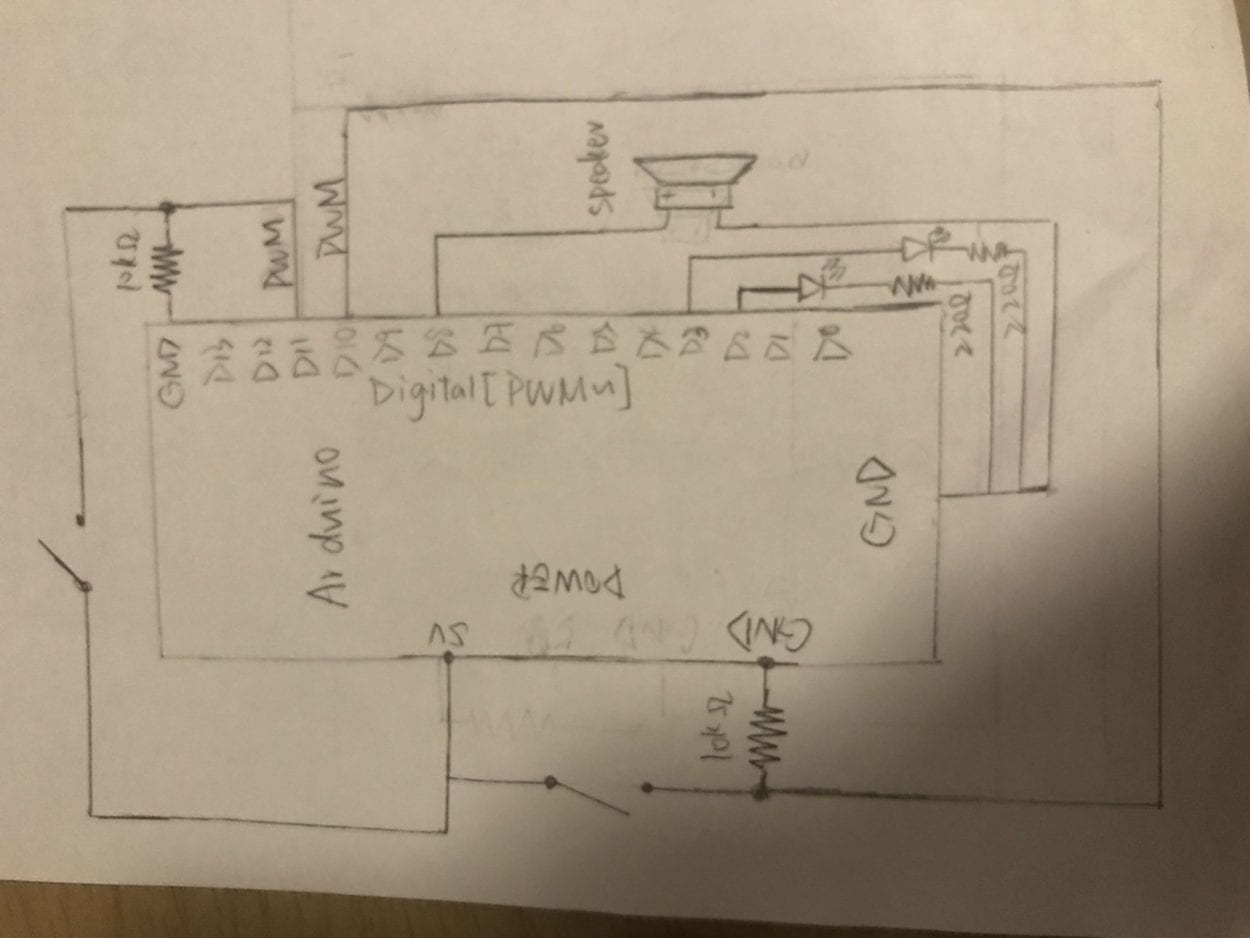During this week’s recitation, we are asked to build 3 circuits: Fade, toneMelody and Speed Game. The first two circuits are easy for us to understand and carry out, however, the last Speed Game is much more complicated.
Circuit 1:Fade
This time we use the analog input to make the led light fade from light to darker instead of from on to off. We can change the frequency of its fading process by editing the number in the code.
Circuit 2: toneMelody
This circuit is quite simple, but I really appreciate the melody. It’s so funny.
Circuit 3: Speed Game
(What I said in the video is “Ah! I lose again! “)
We successfully build the circuit quickly, and we enjoy the fun in playing this game. We try to click the button as fastest as we can, then the one who presses quicker is the winner.
What is complicated in this circuit is not building it with so many components but why we should build it like this to make the speed game work. That is the reason why I find drawing the schematic is much more difficult than building it. Based on my understanding, when we are playing this game, the circuit first judge which button is pressed more, then it will release output to the respective led light, and at the same time, the buzzer will be turned on when declaring the outcome of the match.
Question 1:
As I learn about the digital and analog signals, I can apply it to the daily life flexibly. Fade circuit uses analog signals, I can use the theory to the decoration light on the performance stage. The toneMelody uses digital signals, I can apply it to doorbells. And the speed game circuit can be perfectly applied in to use in Q&A tv shows. After reading Physical Computing and observing what happens in my daily life, I want to define interaction in physical computing as the process that we humans give instructions through codes, the circuit (or computer) then processes our codes and make relevant outputs. Take the speed game as an example, we build a code, and press the button to give instructions, then through processing, the light is turned on to fulfill our instructions.
Question 2:
The 10k resistor is used to control the current to avoid overloading . As the power is as strong as 5V, the current may be so strong for the button that it may cause damage to the button.
Question 3:
During my trip to Osaka, I really appreciate the Harry Potter Light Show performed in USJ. If I have 100,000 LEDs of any brightness and color at my disposal, I will decorate my house with these lights and conduct a similar light show based on the theme of my favorite comics Spiderman! I can make videos whose materials come from Spiderman cartoons and add some music to make the show more attractive. At night, the 100,000 led lights will work together as a screen attached on my house to play the videos.
